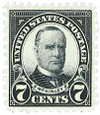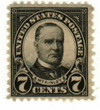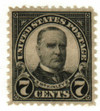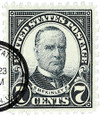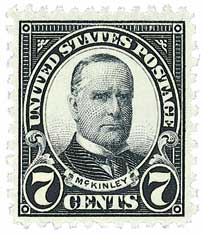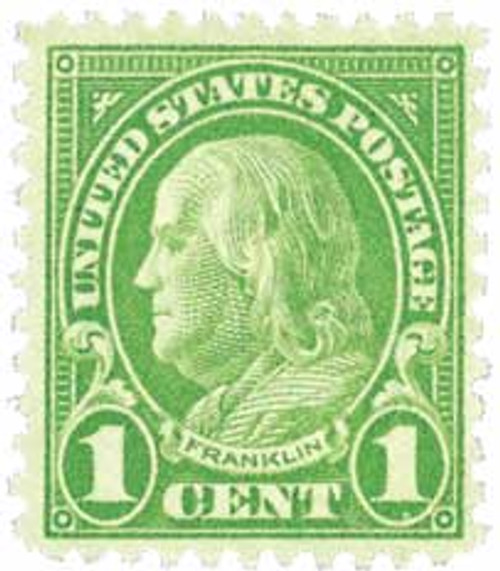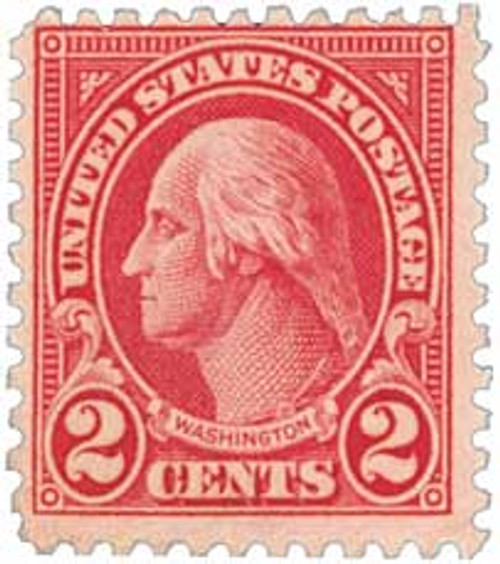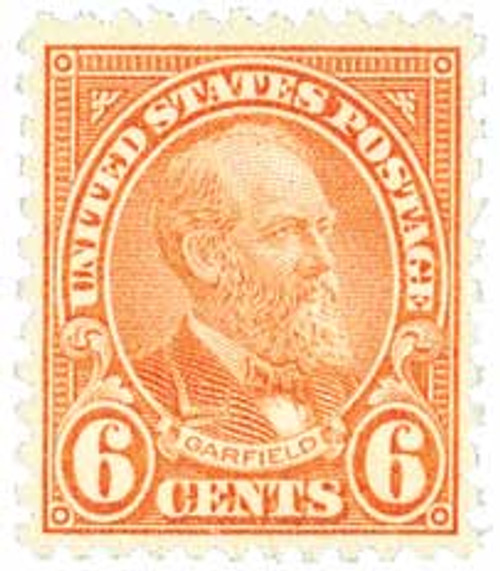
# 639 - 1927 7c McKinley, black
1926-28 Rotary Stamps
7¢ William McKinley
First City: Washington, D.C.
Printing Method: Rotary Press
Perforation: 11 x 10 ½
Color: Black
President McKinley Dies
Eight days after being shot by an assassin at the Pan-American Expo, President McKinley died on September 14, 1901.
Less than a year before, McKinley had won re-election. Following his March inauguration, McKinley and his wife, Ida, began a national tour. But when Ida fell ill, they postponed the last stop, the Pan-American Exposition in Buffalo, New York, until later in the year. On September 5, McKinley addressed some 50,000 people at the fairgrounds, with Leon Czolgosz among them. Czolgosz was an anarchist who wanted to become a hero.
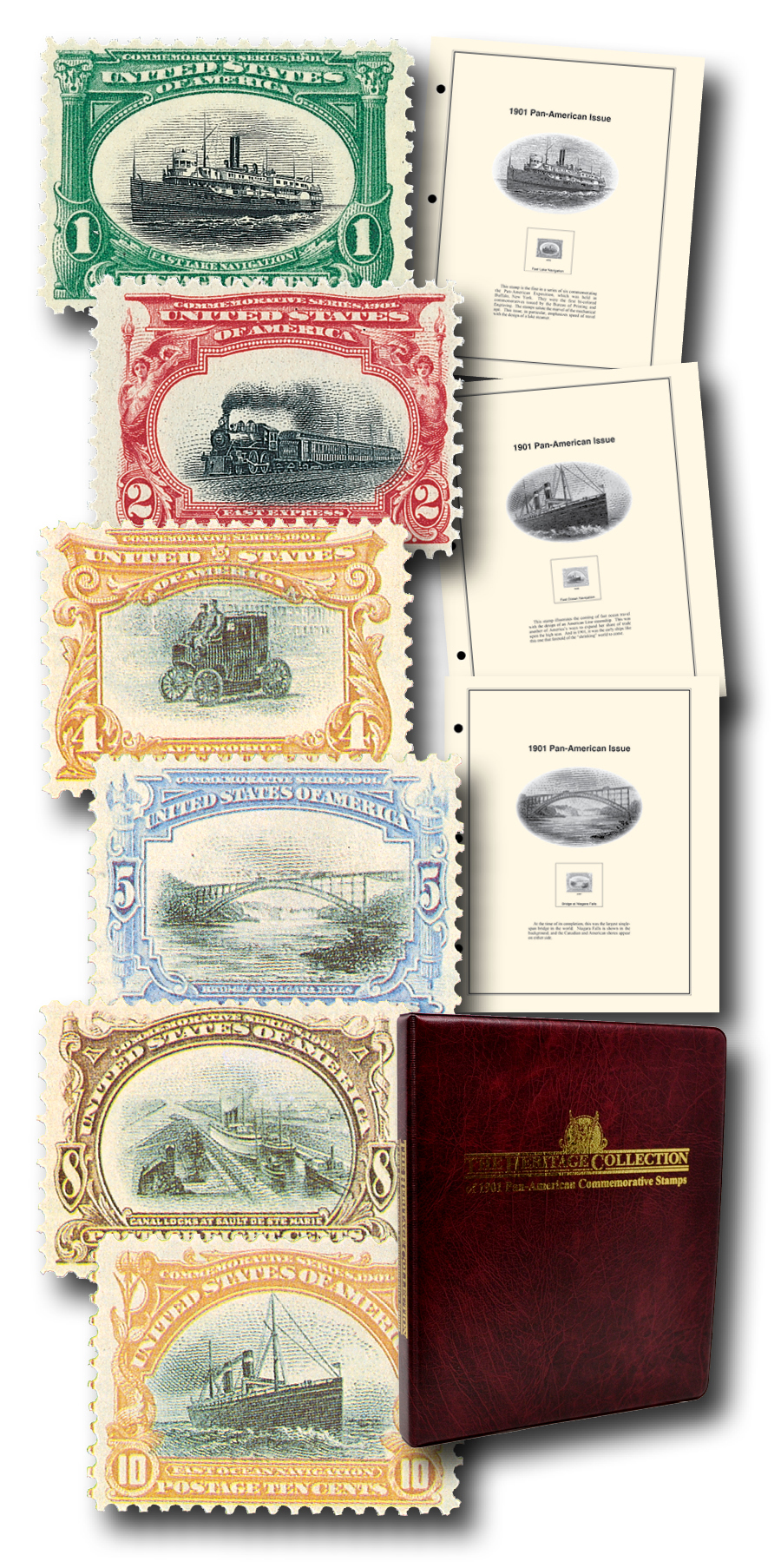
The following day, as the President greeted the public, Czolgosz approached McKinley and shot him twice at point-blank range in the abdomen. Upon being shot, McKinley’s first thoughts were of his wife, telling his aides to be careful how they broke the news to her. He also ordered that the mob of people surrounding Czolgosz leave him be, likely saving his life.
Initially, doctors thought McKinley’s condition was improving. However, they could not tell that he had developed gangrene internally, which was slowly poisoning his blood. Ida sat by his side throughout it all, and when his condition worsened, she cried that she wanted to go with him. He responded that “We are all going… God’s will be done, not ours.” President McKinley died in the early morning hours of September 14, 1901. His assassin was found guilty and later sentenced to death.
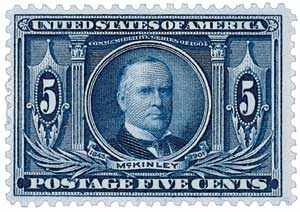
According to one historian, “The nation experienced a wave of genuine grief at the news of McKinley’s passing.” At least 200,000 people passed by his casket as it sat in the Capitol Rotunda and a Canton, Ohio, courthouse. McKinley was later interred at a special memorial in his honor, which was already under construction.
1926-28 Rotary Stamps
7¢ William McKinley
First City: Washington, D.C.
Printing Method: Rotary Press
Perforation: 11 x 10 ½
Color: Black
President McKinley Dies
Eight days after being shot by an assassin at the Pan-American Expo, President McKinley died on September 14, 1901.
Less than a year before, McKinley had won re-election. Following his March inauguration, McKinley and his wife, Ida, began a national tour. But when Ida fell ill, they postponed the last stop, the Pan-American Exposition in Buffalo, New York, until later in the year. On September 5, McKinley addressed some 50,000 people at the fairgrounds, with Leon Czolgosz among them. Czolgosz was an anarchist who wanted to become a hero.

The following day, as the President greeted the public, Czolgosz approached McKinley and shot him twice at point-blank range in the abdomen. Upon being shot, McKinley’s first thoughts were of his wife, telling his aides to be careful how they broke the news to her. He also ordered that the mob of people surrounding Czolgosz leave him be, likely saving his life.
Initially, doctors thought McKinley’s condition was improving. However, they could not tell that he had developed gangrene internally, which was slowly poisoning his blood. Ida sat by his side throughout it all, and when his condition worsened, she cried that she wanted to go with him. He responded that “We are all going… God’s will be done, not ours.” President McKinley died in the early morning hours of September 14, 1901. His assassin was found guilty and later sentenced to death.

According to one historian, “The nation experienced a wave of genuine grief at the news of McKinley’s passing.” At least 200,000 people passed by his casket as it sat in the Capitol Rotunda and a Canton, Ohio, courthouse. McKinley was later interred at a special memorial in his honor, which was already under construction.




